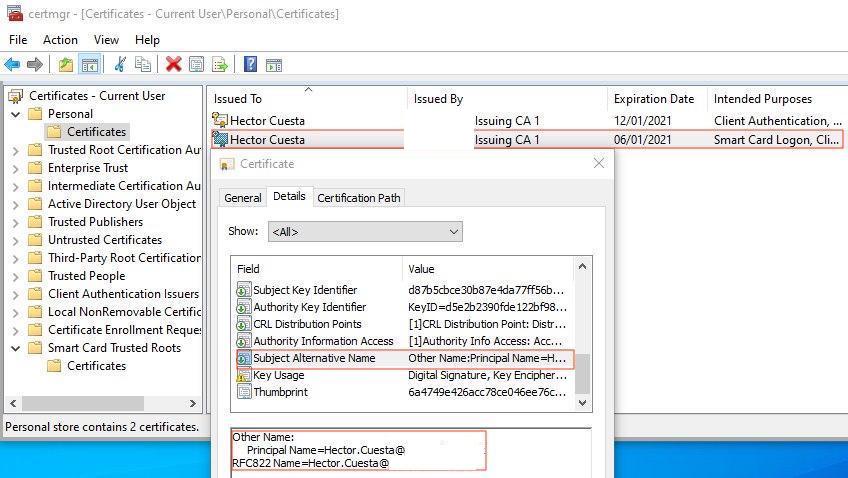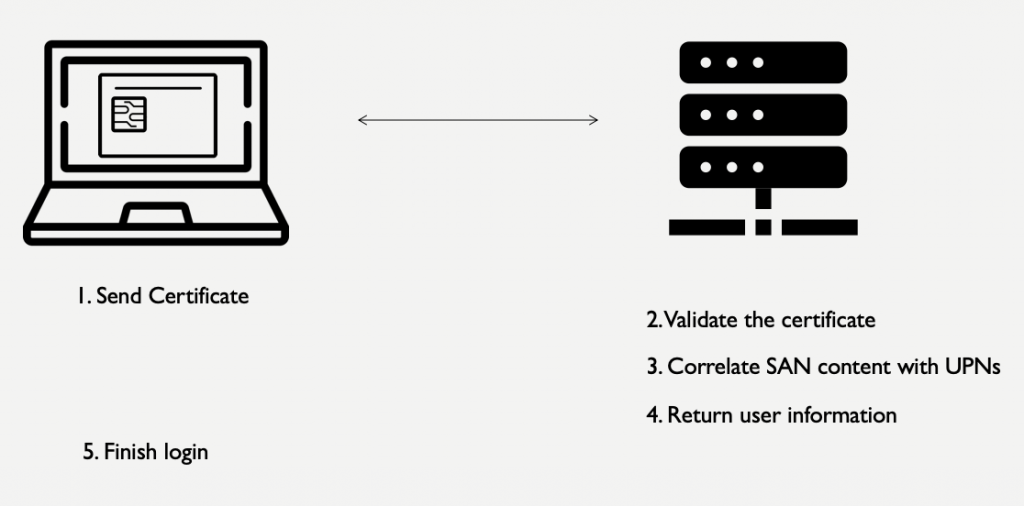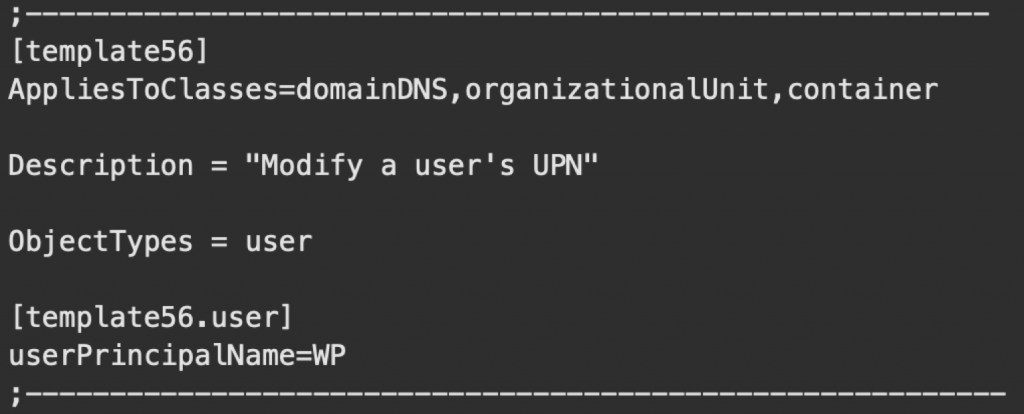Introduction
Recently, I encountered a fully password-less environment. Every employee in this company had their own smart card that they used to login into their computers, emails, internal applications and more. None of the employees at the company had a password at all – this sounded really cool.
In this post I will detail a technique used to impersonate other users by modifying a User Principal Name (UPN) on an Active Directory domain that only uses smart cards.
I want to focus on the smart card aspect, so for context, we start this post assuming we have some NetNTLMv2 hashes that we can neither relay nor crack.
Smart Cards and active directory
Before abusing any technology its important to understand the basics, so lets take a look on how Active Directory deals with smart cards.
If you have some knowledge of windows internals you probably know that NTLM/NetNTLM hashes are important for windows computers to communicate between each other, and these hashes are generated from a secret, usually the password of the user. So how does Active Directory deal with smart cards if the users do not have any password at all?
When you setup a user account in Active Directory to use smart cards the account password is automatically changed to a random 120 character string. So, the chances of cracking these are close to zero with current hardware.
To make this even more challenging Windows server 2016 has an option to regenerate these random passwords after every interactive login, invalidating previous NTLM hashes if your forest is on the server 2016 level. Alternatively, you can set this password to expire once a day. If you want more information about this setup I encourage you to check out this blogpost.
But how does this really work? What does the smart card contain and more importantly, how are smart cards and Active Directory users correlated?
How does it really work?
The setup that Im going to show you can have small changes, but this is the most common implementation I have encountered.
All smart cards contain a certificate with multiple values, one of them being the Subject Alternative Name (SAN). This field contained the email of the user that owned the card, so, for example “hector.cuesta@contoso.local”. To access the certificate on the smart card, the user needed to enter a PIN number validated against the one stored on the smart card. Every time the user wanted to login into their computer, they need to first introduce the smart card and then enter the pin.

After the pin is entered, the smart card gives the certificate to the computer and this information is forwarded to a domain controller for further validation/authentication. When the domain controller receives the certificate, the signing authority is validated and if the authority is trusted, authentication will proceed.
At this point the domain controller knows that the information contained in the certificate can be validated, but how is this certificate correlated with an active directory user? To do this the domain controller extracts the SAN from the certificate “hector.cuesta@contoso.local”, and searches this value against all the User Principle Names (UPN) of Active Directory users. To simplify things, when there is a match, the user’s NTLM hash and some other information are sent back to the computer that initiated the authentication process and the login process can finalise.

At this point we have two options of abusing this technology.
First one, try to attack the smart card directly by forging a certificate with an arbitrary SAN. Unless you have a way to break RSA you should not be able to do this.
Second; attack the Active Directory environment by modifying the UPN of a victim user to the value of the SAN in your legitimate smart card (i.e. switch the UPN for the victim for yours). When the UPN <-> SAN correlation occurs, domain controllers send back the details for the victim user instead of yours.
Who can modify the UPN of a user?
The first group of people that come to mind are domain admins, and you may be thinking “What was the point of impersonating someone if you are already domain admin?” But, as I will show later this is still interesting even when you have domain admin privileges. Anyway, changing UPN values is not restricted to only domain admins.
Delegation of permissions in Active Directory environments is common, and includes delegating the permission to change a user’s UPN as well. This can be seen in the following Microsoft guidelines which even has a template for making this change.

But why should someone want to delegate this change? Imagine a big company with thousands of employees. Updates to user profiles like; a change of the address/phone number, to correct errors, or address modifications in the name and surname of users are common tasks. Imagine, for example, countries where people change their surname when they get married. Typically, high level IT admins like domain admins don’t perform these incremental changes, instead this kind of low level administration is usually performed by Help Desk users. And as you will see later, a user with permission to change the UPN value of a user can impersonate any other user in Active Directory when using smart cards.
As I said before, this is also interesting even if you already have domain admin privileges. Imagine that you manage to compromise the NTLM hash of a domain admin. You are not going to be able to crack it, but you can do pass the hash. You have two main problems, the first being that the NTLM hash is going to become invalid as soon as the domain admin performs an interactive login using their smart card, and the second – when an account is configured to use smart cards you can’t perform interactive logins using pass the hash – so forget about RDP. Alternatively, imagine that you want to login to a computer to obtain some files, but this computer is properly isolated and no remote administrative interfaces are enabled, the only way would be to physically login into the computer and that’s not possible to do using an NTLM hash. However, using the attack I am about to explain you can trick active directory to allow a login to the box using your smart card.
Performing the attack
Now that you understand the conceptual part of the attack lets go into the practical details on how to execute it. You will need a valid user able to perform UPN changes, a valid smart card, a target account and the dsmod windows utility.
First of all you will need to change the UPN of the user associated to your smart card, since active directory does not allow for duplicate UPNs to exist.

Next you will need to modify the UPN of the target user, modifying their UPN to match the SAN attribute of your smart card.

After this, you simply login to a computer using your smart card and automagically windows will login you as the victim user.
Finally, restore the UPNs on the target user, or they are not going to be able to login anymore with their smart card.

How to detect/fix
At this point you are probably wondering how can you fix or detect this, and I sad to tell you, there is no fix for this as it’s the intended behaviour and how the current integration of smart cards and active directory works.
However, there are a few thing that can be done. First of all, monitor for windows events that indicate a change in the UPN such as event ID ‘4738’, and actively verify the legitimacy of these changes as soon as they are performed. Another important action is to review who can perform UPN changes in your organisations and why. In my opinion security is a battle of reducing attack surface, so the fewer users allowed to perform this change the better.
In general, the values used for correlation between the smart card and Active Directory, the SPN and UPN in this case, should be treated as sensitive values, just like passwords, by monitoring for changes and controlling who can modify them.
Detection from a more offensive point of view and be done with windows utilities like dsacls. Queries in tools like BloodHound could probably be made to obtain a list of users with permissions to change UPNs.
References
Searching for references of this “attack” I found an article from Roger A. Grimes where he mentioned this same “attack” avenue but using windows GUI tools instead of dsmod, he also mentioned that he heard about this attack in the past but can’t remember who told him about this, so the original author remains unknown.
